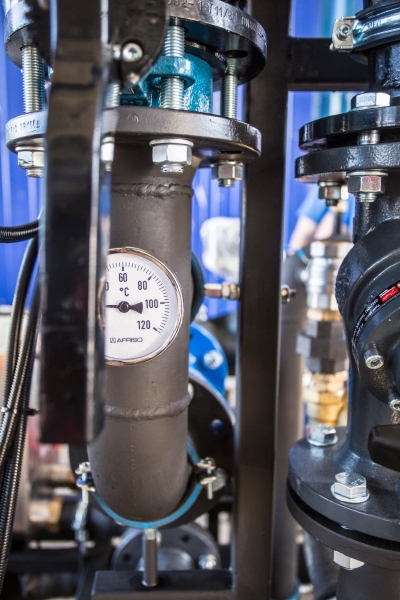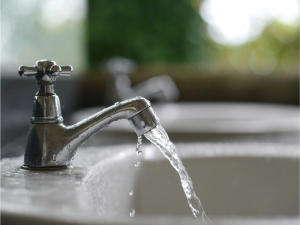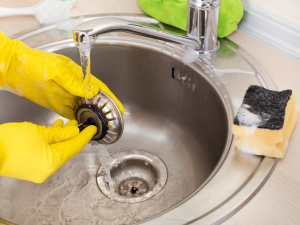Repairing clogged sewer lines is something homeowners dread because it is an expensive, intrusive, and lengthy process. Also since most homeowners have no experience and skills in repairing clogged drainage lines, they are most likely to pay a professional plumber to get the work done.
Professional plumbers today rely on modern technological innovations, which have revolutionized plumbing maintenance. Thanks to tools like miniature cameras, professional plumbing technicians have, at their disposal, effective technology that helps them inspect clogged sewer lines and accurately pinpoint the cause of the blockage.
Therefore, if there is a plumbing problem such as leakage or clogging, it can be detected quite easily via plumbing camera inspection. But how exactly does it work? And, how effective is the process? Let’s get a comprehensive overview.
How a Plumbing Camera Inspection Works
Sewer line inspection cameras combine light-emitting diode (LED) light and a high-definition (HD) video camera. An LED light is used to get a visual image of your pipes’ insides on a liquid crystal display (LCD) screen.
The camera plumbing inspection process begins with the fastening of a high-definition sewer inspection camera to the end of a snake-like cable or flexible rod. A snake-like cable enhances mobility inside sewer lines and pipes. The sewer line inspection camera is flexible and tiny and can easily be fixed without complications.
A professional plumber will then insert the flexible rod or snake-like cable along with the sewer line camera into the drains to inspect. This way, it accurately checks for the cause and position of breaks and clogs. The plumbing professional can manipulate the snake-like cable remotely because the rod or cable has miniature motors.
The manipulation is through remote adjustments and slight turns to ensure all sections of the drains can be illuminated and visually analyzed.
How to Identify Plumbing Problems Using a Plumbing Camera
The sewer line camera is connected to an LCD screen or closed-circuit display. The light-emitting diode attached to the camera produces powerful light to illuminate the inside of drains and pipes. This makes it possible to see all the details inside the drains, including clogs, debris, and cracks of all sizes.
The sewer line inspection camera can capture all this because it travels back and forth in the drains. A radio transmitter is connected to the sewer line camera to help record the depth of the drains and their physical location. Through the video camera plumbing inspection, the professional plumber can locate the position of the clog, any corrosion, and the type of debris causing the blockage.
The process can be applied in virtually all plumbing situations and works. This means that you do not have to dig up your floor or lawn in an effort to fix the plumbing problems.
Types of Plumbing Problems the Video Camera Inspection Can Identify
A video camera inspection is an effective method of fixing plumbing problems. It can identify a wide array of problems within your home’s plumbing system without having to dig all over.
The method can be used to identify cracked, broken, or shifted pipes. This is especially important following occurrences such as earthquakes. The inspection camera can be fed alongside the drain itself, making it easier to identify breakages, shifts, and cracks.
Furthermore, a video camera plumbing inspection can be used to identify major clogs caused by a buildup of debris such as paper, grease, and oils. Also, tree roots causing clogs will be easily identified through the process.
Another serious problem that is easily identified through plumbing video camera inspection is the corrosion sites along the length of the pipes. Other methods may not reveal this problem, yet it is one of the common causes of the breakdowns of plumbing systems.
In addition, you can take advantage of a plumbing camera inspection to identify sagging drainage pipes that may cause future blockages.
Viewing and Analysis of Recordings
Because sewer line cameras are more advanced, they can provide more accurate information. They scrupulously identify the material your pipes are made of, the depth of the drains, and the wastewater flow direction. These are critical pieces of information that can help you find a lasting solution to the plumbing problems you might be experiencing.
However, the inspection doesn’t end here. Once the plumber has run the camera inspection through the drain, the visuals from the inspection are made into recordings to be viewed and analyzed later for identification of the problem.
Since the plumbing camera system is a diagnostic tool, it can tell the plumbing professional what needs to be done to unclog the drains or repair the pipes. Alternatively, once the problem has been identified, the plumbing professional can use his expertise to come up with the best viable options to efficiently fix this problem.
This evidentiary information should always be kept for future reference. It is helpful when you experience plumbing problems in the future because you can always refer to the previous recordings and come up with the right solution.
Advantages of a Plumbing Camera Inspection
A plumbing camera inspection of pipes and drains will help a professional plumber to establish the cause of the leaks or blockage. Just like a plumbing snake, a sewer line camera can help your plumber diagnose, locate and identify any internal plumbing problems in your drains.
However, before using a plumbing camera, the plumber needs to be acquainted with your home’s plumbing system. This way, they can establish the exact extent of the plumbing problems you are facing.
The incorporation of camera plumbing inspection has eliminated guesswork that was a hallmark in plumbing works.
Video camera plumbing inspection is also easy to use and very convenient. As a homeowner, all you need is a sewer or drain opening whose width is enough to accommodate the sewer inspection camera. Furthermore, a plumbing professional can conveniently create a temporary opening to allow the sewer inspection camera to pass through.




